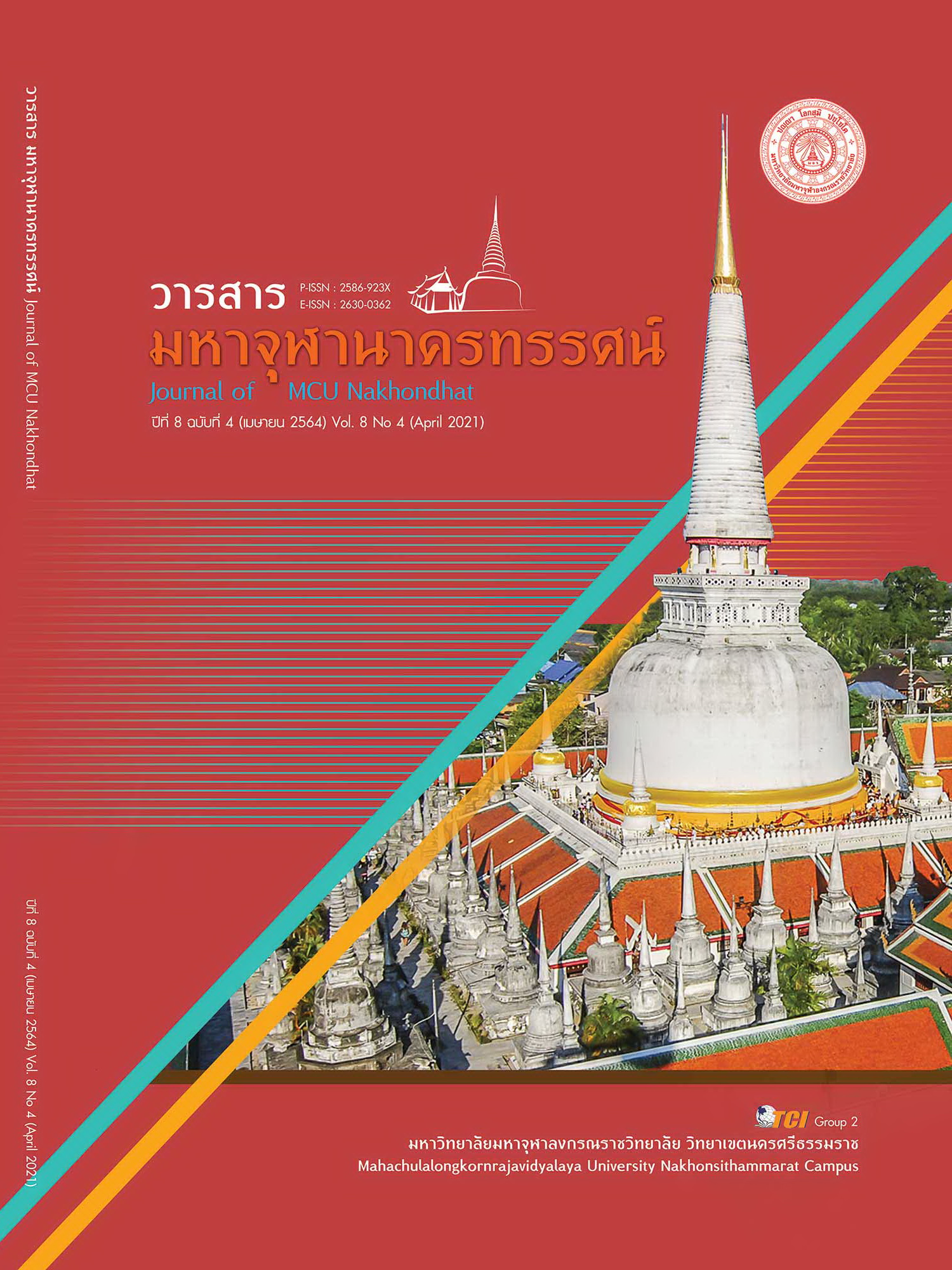NURSING CARE IN LAMINECTOMY FOR RELEASE NERVES COMPRESSION: 2 CASE STUDIES
Main Article Content
Abstract
The objectives of this article were to study the nursing care of two case studies with laminectomy for release nerve compression in a comparative study of symptoms and treatment. For effective nursing care planning. By selecting patients with degenerative spondylosis and symptoms of spinal stenosis and reconstructive surgery to release nerve compression. In conjunction with 2 cases of underlying disease and surgical complications, data were collected in accordance with nursing standards for spinal stenosis patients and symptoms of spinal stenosis. The results were analyzed and compare problem and needs, treatment and nursing care of the patients: It was found that both patients with spinal stenosis were different severity, therefore receiving different surgeries. First patient had spinal nerve outlet surgery. Then reinforced with a screw to hold the spine. 2nd patient, in addition to spinal nerve exit channel surgery, the joint was fused by using bone meal inserted in a material (cage) instead of herniated disc to connect the spinal bone in two levels, the surgery was a complicated procedure, making it take longer than the first patient. Therefore, postoperative nursing is different according to the patient's condition. Nurse’s care is an important role in the close care of patients 24 hours a day, from the beginning to the discharge. Preparation before surgery, post - operative care for possible complications at any time. It can reduce the severity of potential complications and improve postoperative recovery and lead to a better level of quality of life.
Article Details
References
ชนิภา ยอยืนยง. (2558). ปัจจัยทำนายการฟื้นตัวด้านความสามารถในการทำหน้าที่ของร่างกายในผู้ป่วยที่ได้รับการผ่าตัดกระดูกสันหลังส่วนเอว. ใน วิทยานิพนธ์พยาบาลศาสตรมหาบัณฑิต สาขาการพยาบาลผู้ใหญ่. มหาวิทยาลัยมหิดล.
ตติยา จำปาวงษ์. (2560). ผลของโปรแกรมส่งเสริมการรับรู้สมรรถนะของตนเองต่อการฟื้นฟูสมรรถภาพหลังผ่าตัดกระดูกสันหลังส่วนเอวแบบลามิเนกโตมี่ในผู้สูงอายุโรคโพรงกระดูกสันหลังส่วนเอวตีบแคบ. ใน วิทยานิพนธ์พยาบาลศาสตรมหาบัณฑิต สาขาการพยาบาลผู้ใหญ่. มหาวิทยาลัยขอนแก่น.
พรสินี เต็งพานิชกุล. (2559). การพยาบาลผู้ป่วยผ่าตัดกระดูกสันหลัง. ใน อรพรรณ โตสิงห์ และคณะ (บรรณาธิการ). การพยาบาลผู้ป่วยทางออร์โธปิดิกส์ (หน้า 184 - 194). กรุงเทพมหานคร: โครงการตำราคณะพยาบาลศาสตร์ มหาวิทยาลัยมหิดล.
โรงพยาบาลจุฬาลงกรณ์ สภากาชาดไทย. (2562). เกร็ดความรู้สุขภาพ ภาวะกระดูกสันหลังเสื่อม. เรียกใช้เมื่อ 15 ธันวาคม 2563 จาก https://chulalongkornhospital.go.th/kcmh/
ลัดดาวัลย์ หิมคุณ, และคณะ. (2560). ปัจจัยทำนายคุณภาพชีวิตของผู้ป่วยหลังผ่าตัดกระดูกสันหลังระดับเอว. วารสารพยาบาลสาร, 35(3), 83-93.
ศศิกรณิศ สันติวรบุตร. (2561). ผลของโปรแกรมส่งเสริมการรับรู้สมรรถนะแห่งตนต่อคุณภาพการฟื้นตัวหลังผ่าตัดและการปฏิบัติกิจวัตรประจำวันของผู้ป่วยหลังผ่าตัดกระดูกสันหลังส่วนเอว. ใน วิทยานิพนธ์พยาบาลศาสตรมหาบัณฑิต สาขาการพยาบาลผู้ใหญ่. มหาวิทยาลัยคริสเตียน.
สดากาญจน์ เอี่ยมจันทร์ประทีป. (2560). ผลของการประคบเย็นร่วมกับการส่งเสริมสมรรถนะแห่งตนต่อความปวดและการฟื้นฟูสภาพหลังผ่าตัดใส่เหล็กดามกระดูกต้นขา. วารสารพยาบาลสาร, 44(1), 39-49.
สายสมร บริสุทธิ์, และคณะ. (2560). แนวทางการพยาบาลผู้ป่วยผ่าตัดกระดูกสันหลังสำหรับพยาบาลทั่วไป. (พิมพ์ครั้งที่ 1). กรุงเทพมหานคร: ธนาเพลส.
สุทธินี ชัยเฉลิมศักดิ์, และคณะ. (2562). ผลของโปรแกรมการส่งเสริมการรับรู้ความสามารถแห่งตนต่อพฤติกรรมการดูแลตนเองหลังผ่าตัดในผู้ป่วยสูงอายุที่ได้รับการทำผ่าตัดกระดูกสันหลัง. วารสารพยาบาลสภากาชาดไทย, 12(1), 144-160.
Ghogawala, Z. et al. (2016). Laminectomy plus fusion versus laminectomy alone for lumbar spondylolisthesis. The New England journal of medicine, 374 (4), 1424-1434.
Koter, M. et al. (2020). Surgical outcome following laminectomy with fusion versus laminectomy alone in patientswith degeneration cervical myelopathy. The Spine journal, 45(24), 1696-1703.
Spoonamore, M. S. (2020). Posterior Lumbar Interbody Fusion (PLIF) and Transforaminal Interbody Fusion (TLIF). Retrieved November 2, 2020, from https://www.uscspine.com/treatement-options/back-treatment/lumbar-interbody-fusion/
Ploumis, A. et al. (2007). Degenerative lumbar scoliosis associated with spinal stenosis. The Spine Journal, 7(4), 428-436.


